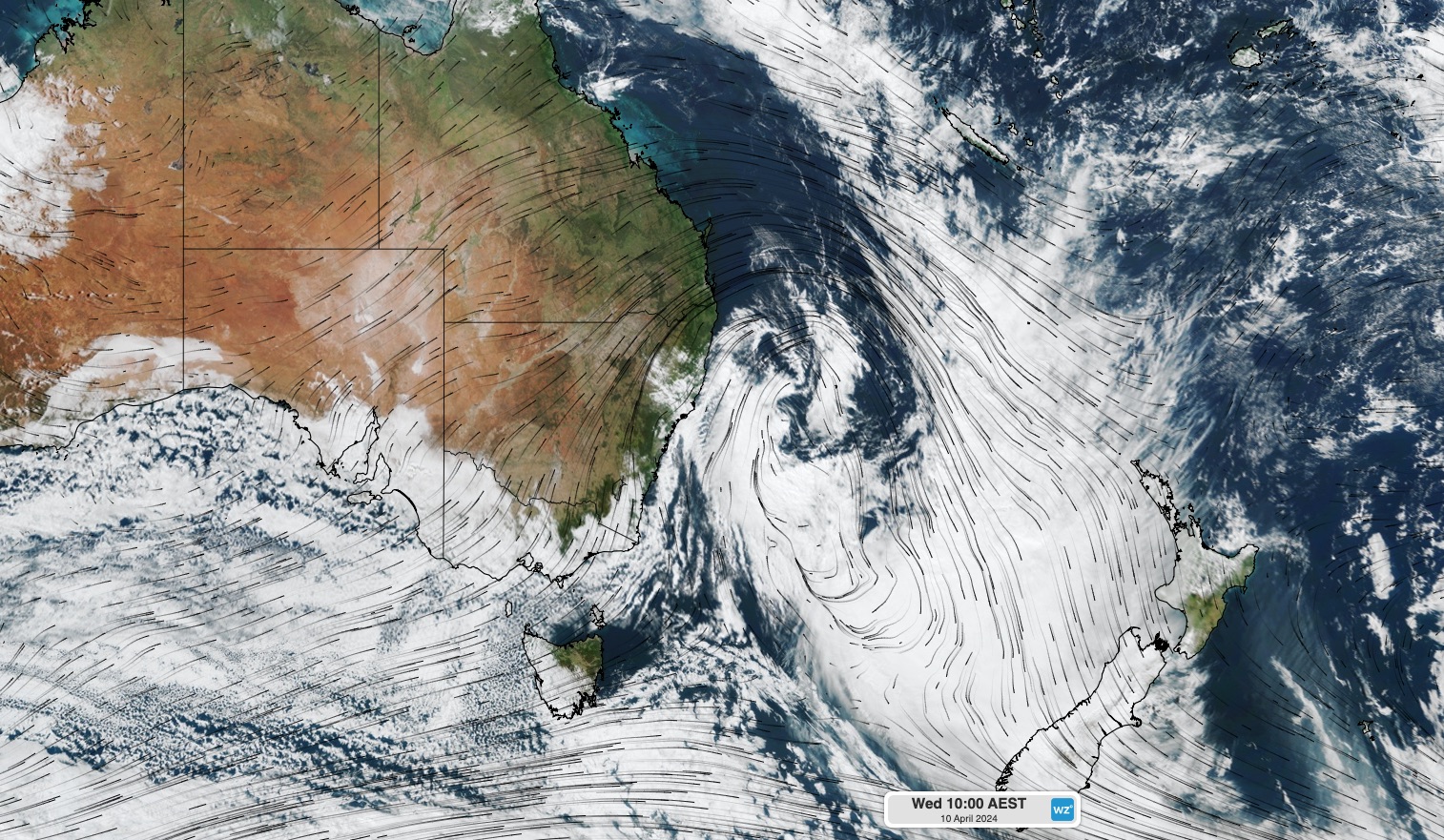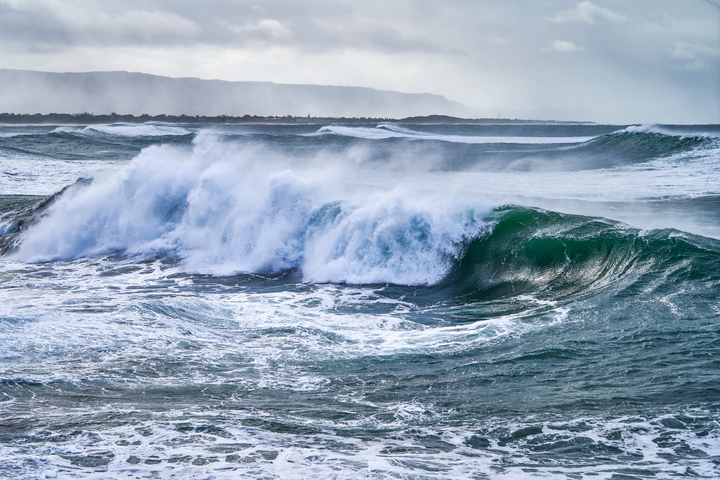A powerful burst of southerly winds is causing massive waves to batter NSW beaches today, with warnings in place for damaging surf in some areas.
A deepening low pressure system over the Tasman Sea caused a blustery southerly change to move up the NSW coast on Tuesday. These cool southerly winds have strengthened further on Wednesday morning, causing damaging gusts and huge waves on the NSW coast, as we warned you about yesterday.

Image: Composite satellite and modelled wind at 10am AEST on Wednesday.
A wave rider buoy located off the coast of Sydney’s Northern Beaches recorded maximum wave height of around nine metres on Wednesday morning. This is the second time in five days waves have reached this high near Sydney, following a similar surge of swell on the weekend.

Image: Wave height observations off the coast of Sydney’s Northern Beaches over the last few days. Source: Manly Hydraulics
On land, wind gusts reached 102 km/h at Wattamolla and 78 km/h on Sydney Harbour in the early hours of Wednesday morning.
Blustery winds and large waves will continue to affect some central and northern parts of the NSW coast on Wednesday, although wind will gradually ease into the afternoon and evening.
As of 11am AEST, a severe weather warning was in place for damaging surf along the coast between Seal Rocks and Broken Bay.
DTN APAC offers a comprehensive suite of services, refined through years of collaboration with the marine, ports and offshore industries, to optimise the safety and efficiency of your operations.
We work with you to understand your intrinsic operational challenges and customise high-precision forecasting, metocean and aviation services to your exact location and operational scope. For more information, please contact us at apac.sales@dtn.com.






